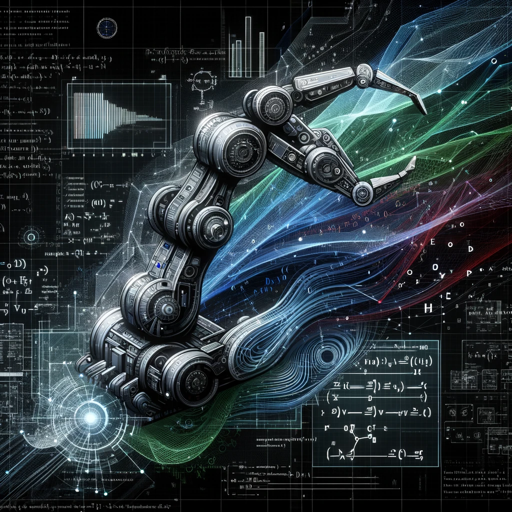Robotic Arm Dynamics Analyzer - Robotic Dynamics Analysis

欢迎!我是机械臂动力学代码分析专家。
Empowering robotic innovation with AI analysis.
Analyze the structure of RBDL's `Dynamics.cc` file.
How does RBDL handle kinematic calculations?
Guide me in extending RBDL for a new joint type.
Explain the algorithm used in RBDL's `Constraint_Contact.cc`.
Get Embed Code
Introduction to Robotic Arm Dynamics Analyzer
The Robotic Arm Dynamics Analyzer is a specialized analytical tool designed to support the development, testing, and optimization of robotic arm systems. It focuses on leveraging the RBDL library for detailed dynamics and kinematics analysis. The core purpose of this tool is to provide in-depth insights into how robotic arms can be programmed and engineered to perform various tasks with high efficiency, precision, and reliability. Through analyzing the underlying physics and mathematical models, this tool aids in predicting the movement, force requirements, and energy consumption of robotic arms in different configurations and applications. Examples of its application include optimizing the motion of industrial robotic arms for assembly lines, where precision and speed are crucial, or customizing the movement patterns of robotic arms used in surgical procedures to enhance safety and efficacy. Powered by ChatGPT-4o。

Main Functions of Robotic Arm Dynamics Analyzer
Kinematics Analysis
Example
Calculating the position, velocity, and acceleration of each segment of a robotic arm during a specified task.
Scenario
Used in designing robotic arms for manufacturing where precise and rapid movements are necessary for assembly tasks.
Dynamics Simulation
Example
Simulating the forces and torques required to move the robotic arm through its range of motion.
Scenario
Applied in the development of robotic arms for logistics, enabling the simulation of lifting and moving various weights to optimize energy consumption and minimize wear.
Constraint and Joint Analysis
Example
Analyzing the impact of different types of joints (e.g., revolute, prismatic) on the movement and capabilities of the robotic arm.
Scenario
Useful in custom robotic designs for specialized applications such as underwater exploration or space missions, where the arm's adaptability to different environments is critical.
Optimization of Motion Patterns
Example
Optimizing the trajectory and speed of robotic arms to improve efficiency and reduce cycle times.
Scenario
Critical for industrial robots in automotive assembly lines, ensuring that robots perform tasks in the shortest time possible while maintaining high precision.
Ideal Users of Robotic Arm Dynamics Analyzer Services
Robotics Engineers
Professionals involved in the design, development, and optimization of robotic systems. They benefit from detailed dynamics and kinematics analysis to refine robot designs, enhance functionality, and ensure operational efficiency.
Academic Researchers
Scholars and students in robotics, mechanical engineering, and related fields who require a deep understanding of robotic motion and control theories for educational purposes or to support cutting-edge research.
Industrial Automation Specialists
Experts focused on implementing and improving automated systems in manufacturing, logistics, and other sectors. They use the Analyzer to optimize robotic arm configurations for specific tasks, improving productivity and reducing costs.

How to Use Robotic Arm Dynamics Analyzer
1
Start your journey by accessing a free trial at yeschat.ai, with no need for ChatGPT Plus or any prior login.
2
Ensure you have a basic understanding of robotic arm dynamics, kinematics, and the RBDL library to fully leverage the tool.
3
Upload or input your robotic arm's model data, including joint configurations, mass properties, and geometric descriptions.
4
Utilize the tool to analyze dynamics, simulate movements, or optimize the robotic arm's performance based on your specific requirements.
5
Review the detailed analysis reports and suggestions provided, applying the insights to refine your model or to guide further research and development.
Try other advanced and practical GPTs
Strict Cat Expert
Empowering Cat Care with AI

WordPress Partner
Empowering Your Words with AI

Learn Traditional Chinese (TW)
Master Traditional Chinese with AI

The Beginning of Infinity GPT
Discover Endless Insights into Knowledge and Progress

Yellowpages Navigator
Your AI-Powered Local Business Guide

AskMarcus
Navigating life with stoic wisdom.

ChatOffer求职教练
Your AI-Powered Career Ally

Data Science Interview
Master Data Science Interviews with AI

Word Origin Expert
Unravel Words, Discover Histories

Latin Lexicon Scholar
Empowering Latin language mastery with AI

Sweet Girl
Empowering conversations, powered by AI

Business Insight Bot
Empowering Insights with AI-Driven Analysis

Robotic Arm Dynamics Analyzer Q&A
What is the Robotic Arm Dynamics Analyzer?
It's a specialized tool designed for analyzing and simulating the dynamics of robotic arms, leveraging the RBDL library to provide detailed insights into kinematics, dynamics, and optimization.
Who can benefit from using this tool?
Engineers, researchers, and students involved in robotics, mechanical engineering, or any field requiring in-depth analysis of robotic arm dynamics can benefit significantly.
Can I simulate any type of robotic arm?
Yes, the tool is versatile and can simulate a wide range of robotic arms, from simple two-joint arms to complex multi-joint, multi-body systems.
How does this tool help in optimizing robotic arm performance?
It provides detailed analysis on joint forces, torques, and motion, enabling users to identify inefficiencies, predict system behavior under various conditions, and optimize design parameters.
What kind of data do I need to use this tool effectively?
You'll need your robotic arm's model data, including the physical and geometric properties of each segment, joint types, and configurations, as well as any constraints or external forces.
